| wdt_ID | Product Name | Cat No. | Species Reactivity | Application | Size |
|---|---|---|---|---|---|
| 1 | Goat Anti-Mouse IgG, Fcγ fragment specific; HRP conjugated | AB-M-S001 | Mouse | ELISA, WB, IHC, ICC | 100μl/500μl |
| 2 | Goat Anti-Human IgG, Fcγ fragment specific; FITC conjugated | AB-M-S002 | Human | FC | 100μl/500μl |
| 3 | Rabbit anti-Porcine IgG Antibody;HRP conjugated | AB-M-S003 | Porcine | ELISA, WB | 500μg |
| 4 | Goat Anti-Human IgG, Fcγ fragment specific Antibody | AB-M-S004 | Human | 100μl/500μl | |
| 5 | Goat Anti-Human IgG, Fcγ fragment specific; HRP conjugated | AB-M-S005 | Human | ELISA, WB | 100ul/500ul |
| 6 | Goat Anti-Rabbit IgG(H+L) Antibody; Cy3-conjugated | AB-M-S006 | Rabbit | IF,Flow cyt | 500μl/100μl |
| 7 | Goat Anti-Mouse IgG(H+L) Antibody; HRP conjugated | AB-M-S007 | Mouse | ELISA, WB, IHC, ICC | 100μl/500μl |
| 8 | Goat Anti-Rabbit IgG(H+L) Antibody; HRP conjugated | AB-M-S008 | Rabbit | ELISA, WB, IHC, ICC | 100μl/500μl |
| 9 | Goat Anti-Rabbit IgG(H+L) Antibody;HRP-conjugated | AB-M-S009 | Rabbit | ELISA,WB | 100μl/500μl |
| 10 | Goat Anti-Rabbit IgG(H+L) Antibody | AB-M-S010 | Rabbit | ELISA,WB,IHC,IF | 300μl |
| 11 | Goat Anti-Mouse IgG(H+L) Antibody | AB-M-S011 | Mouse | ELISA,WB,IHC,IF | 300μl |
| 12 | Goat Anti-Rabbit IgG(H+L) Antibody;Biotin conjugated | AB-M-S012 | Rabbit | ELISA,WB,IHC,IF,IP,FC | 300μl |
| 13 | Goat Anti-Mouse IgG(H+L) Antibody;Biotin conjugated | AB-M-S013 | Mouse | ELISA,WB,IHC,IF,IP,FC | 300μl |
| 14 | Goat Anti-Rabbit IgG(H+L) Antibody;FITC conjugated | AB-M-S014 | Rabbit | IHC,IF,FC | 300μl |
| 15 | Goat Anti-Mouse IgG(H+L) Antibody;FITC conjugated | AB-M-S015 | Mouse | IHC,IF,FC | 300μl |
| 16 | Goat Anti-Rabbit IgG(H+L) Antibody;HRP conjugated | AB-M-S016 | Rabbit | ELISA,WB,IHC,IF | 300μl |
| 17 | Goat Anti-Mouse IgG(H+L) Antibody;HRP conjugated | AB-M-S017 | Mouse | ELISA,WB,IHC,IF | 300μl |
| 18 | Rabbit anti-bovine IgG polyclonal Antibody;Biotin conjugated | AB-M-S018 | Bovine | ELISA | 500μg |
| 19 | Rabbit anti-bovine IgG polyclonal Antibody;FITC conjugated | AB-M-S019 | Bovine | 500μg | |
| 20 | Rabbit anti-bovine IgG polyclonal Antibody | AB-M-S020 | Bovine | ELISA | 500μg |
| 21 | Rabbit anti-bovine IgG polyclonal Antibody,HRP conjugated | AB-M-S021 | Bovine | ELISA | 500μg |
| 22 | Rabbit anti-Human IgG Fc Antibody;FITC conjugated | AB-M-S022 | Human | 500μg | |
| 23 | Rabbit anti-Chicken Yolk Immunoglobulin Antibody;FITC conjugated | AB-M-S023 | Chicken | 500μg | |
| 24 | Rabbit anti-Chicken Yolk Immunoglobulin Antibody | AB-M-S024 | Chicken | ELISA | 500μg |
| 25 | Rabbit anti-Goat IgG Fc Antibody;Biotin conjugated | AB-M-S025 | Goat | ELISA | 500μg |
proteins and peptides. We has five expression systems of E. coli, Yeast, Bacoluvirus,
Mammalian Cell and In Vitro E. Coli to prepare different kinds of immunogens
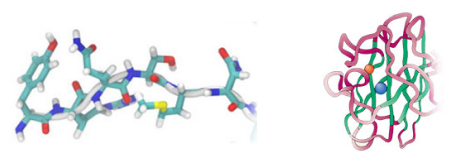
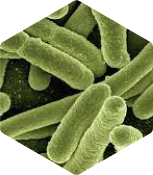
E.Coli
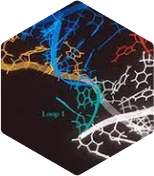
In vitro E.Coli

insect baculovirus
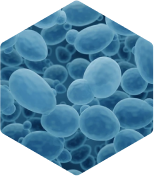
yeast
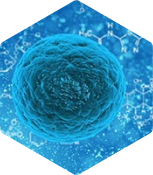
mammalian cell
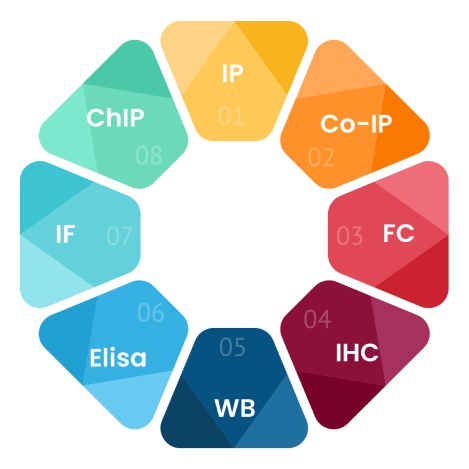
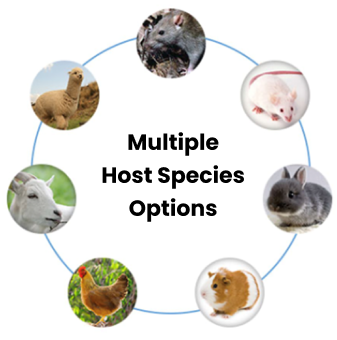
host species, including rabbit, mouse, rat,
chicken, goat and alpaca.
The difference between primary and secondary antibodies can be defined by their binding capability, use & label, source and clonality.
Binding Capability
Primary antibodies bind to the protein or antigen (Ag) or any substance, whereas secondary antibodies bind to primary antibodies. Like in the below figure.
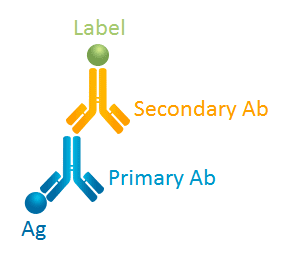
Primary antibody’s Fab domain binds to an antigen and exposes its Fc domain to the secondary antibody, and thus the secondary antibody’s Fab domain binds to the primary antibody’s Fc domain.
Use & Label
In immunoassays, a primary antibody is always needed to bind to the target antigen, but a secondary antibody is not necessarily used. Let’s take direct ELISA and indirect ELISA as an example. Direct ELISA involves direct labeling, meaning that the primary antibody is directly labeled with an enzyme for enzymatic reaction and signal detection, and there is no need for a secondary antibody. Indirect ELISA does not label the primary antibody directly, but instead, it labels the secondary antibody with an enzyme, as shown in the below figure.

Source
The source of antibodies is an important aspect that needs to consider. The host species of the primary antibody should be different from the species of your sample, to avoid cross-reactivity from the secondary antibody with sample immunoglobulins. In addition, the host species of the secondary antibody should be different from the host species of the primary antibody, since the secondary antibody should be directed against the species of the primary antibody.
For example, if you study a mouse sample, you will need a primary antibody that is generated in animals other than mouse, such as those generated in rabbit. Then, if you use a rabbit antibody directed against mouse as a primary antibody, you will need a secondary antibody that is generated in animals other than rabbit, such as those generated in goat.
Clonality
The primary antibody can be either a monoclonal antibody (mAb) or polyclonal antibody (pAb).
Monoclonal antibodies recognize only one epitope on an antigen, while polyclonal antibodies recognize multiple epitopes on an antigen. Monoclonal antibodies have high specificity and high reproducibility, causing less background from staining as compared with polyclonal antibodies. However, due to their high specificity, monoclonal antibodies may fail to work when the target epitope is changed by chemical treatment of the antigen. By contrast, polyclonal antibodies have high affinity, are tolerant of minor changes of the antigen, and allows more robust detection. But polyclonal antibodies have higher batch-to-batch variability, and are more likely to create high background from staining.
The secondary antibody can be either a monoclonal or a polyclonal antibody that binds to the primary antibody or its fragments. There are different forms of secondary antibodies. First, a secondary antibody can be directed against the whole molecule of the primary antibody. For instance, a primary antibody is generally IgG isotype. Then, you will need an anti-IgG H&L (Heavy & Light chains) antibody as a secondary antibody, which reacts with both the heavy and light chains of the primary IgG antibody. In addition, this anti-IgG H&L antibody also reacts with other immunoglobulin classes such as IgM and IgA of the species of the primary antibody, because all immunoglobulins in a given species have the same light chains. Second, a secondary antibody can be specific for the Fab region of the primary antibody. Likewise, this form of secondary antibody also reacts with both heavy and light chains, and therefore reacts with other immunoglobulin classes with the same light chains. Third, a secondary antibody can be specific for the Fc region of the primary antibody, meaning that it reacts only with the heavy chain. So this secondary antibody only reacts with one immunoglobulin class, such as IgG or IgM. Finally, a secondary antibody can be specific for the light chain of the primary antibody, so it will react with all immunoglobulin classes with the same light chain.
The difference between primary and secondary antibodies can be defined by their binding capability, use & label, source and clonality.
Binding Capability
Primary antibodies bind to the protein or antigen (Ag) or any substance, whereas secondary antibodies bind to primary antibodies. Like in the below figure.

Primary antibody’s Fab domain binds to an antigen and exposes its Fc domain to the secondary antibody, and thus the secondary antibody’s Fab domain binds to the primary antibody’s Fc domain.
Use & Label
In immunoassays, a primary antibody is always needed to bind to the target antigen, but a secondary antibody is not necessarily used. Let’s take direct ELISA and indirect ELISA as an example. Direct ELISA involves direct labeling, meaning that the primary antibody is directly labeled with an enzyme for enzymatic reaction and signal detection, and there is no need for a secondary antibody. Indirect ELISA does not label the primary antibody directly, but instead, it labels the secondary antibody with an enzyme, as shown in the below figure.

Source
The source of antibodies is an important aspect that needs to consider. The host species of the primary antibody should be different from the species of your sample, to avoid cross-reactivity from the secondary antibody with sample immunoglobulins. In addition, the host species of the secondary antibody should be different from the host species of the primary antibody, since the secondary antibody should be directed against the species of the primary antibody.
For example, if you study a mouse sample, you will need a primary antibody that is generated in animals other than mouse, such as those generated in rabbit. Then, if you use a rabbit antibody directed against mouse as a primary antibody, you will need a secondary antibody that is generated in animals other than rabbit, such as those generated in goat.
Clonality
The primary antibody can be either a monoclonal antibody (mAb) or polyclonal antibody (pAb).
Monoclonal antibodies recognize only one epitope on an antigen, while polyclonal antibodies recognize multiple epitopes on an antigen. Monoclonal antibodies have high specificity and high reproducibility, causing less background from staining as compared with polyclonal antibodies. However, due to their high specificity, monoclonal antibodies may fail to work when the target epitope is changed by chemical treatment of the antigen. By contrast, polyclonal antibodies have high affinity, are tolerant of minor changes of the antigen, and allows more robust detection. But polyclonal antibodies have higher batch-to-batch variability, and are more likely to create high background from staining.
The secondary antibody can be either a monoclonal or a polyclonal antibody that binds to the primary antibody or its fragments. There are different forms of secondary antibodies. First, a secondary antibody can be directed against the whole molecule of the primary antibody. For instance, a primary antibody is generally IgG isotype. Then, you will need an anti-IgG H&L (Heavy & Light chains) antibody as a secondary antibody, which reacts with both the heavy and light chains of the primary IgG antibody. In addition, this anti-IgG H&L antibody also reacts with other immunoglobulin classes such as IgM and IgA of the species of the primary antibody, because all immunoglobulins in a given species have the same light chains. Second, a secondary antibody can be specific for the Fab region of the primary antibody. Likewise, this form of secondary antibody also reacts with both heavy and light chains, and therefore reacts with other immunoglobulin classes with the same light chains. Third, a secondary antibody can be specific for the Fc region of the primary antibody, meaning that it reacts only with the heavy chain. So this secondary antibody only reacts with one immunoglobulin class, such as IgG or IgM. Finally, a secondary antibody can be specific for the light chain of the primary antibody, so it will react with all immunoglobulin classes with the same light chain.
A secondary antibody binds with a primary antibody that is directly attached to the target antigen.
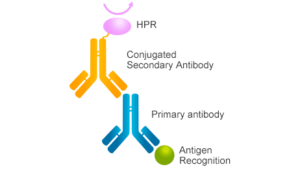
Choosing right secondary antibody is crucial in your experiments and it requires knowledge of below points.
What is the host species of the primary antibody?
Secondary antibodies are directed against the host species of the primary antibody. Therefore, you will need a secondary antibody that is raised in a species different than the host species of the primary antibody to avoid the species reactivity. For example, if your primary antibody is a mouse – derived monoclonal antibody, the secondary antibody is selected as an anti-mouse secondary antibody (goat anti-mouse or rabbit anti-mouse). If the primary antibody is a rabbit-derived polyclonal antibody prepared from rabbit serum, the corresponding secondary antibody needs to select a secondary antibody against rabbit. That is, the corresponding secondary antibody against the species is selected according to the species source of the primary antibody.
What is the class (isotype) and/or subclass of the primary antibody?
Secondary antibody also needs to match the class or subclass of the primary antibody, especially when working with monoclonal antibodies. Polyclonal antibodies, however, are mainly typically IgG or IgG-like class immunoglobulins, so the corresponding secondary antibody is an anti-IgG antibody.
Monoclonalantibodies have different classes and subtypes, the corresponding secondary antibodies also need to be selected based on these subtypes. They are most commonly developed in mice and occasionally in rats, hamsters or rabbits. For example, if the primary monoclonal antibody is mouse IgM, the desired secondary antibody should be anti-Mouse IgM.
If the monoclonal primary antibody is one of mouse IgG subclasses (IgG1, IgG2a, IgG2b and IgG3), then almost all anti-mouse IgG can be combined with it, or you can choose to specifically target this subclass. But if the subclass of the primary antibody is not known, then you can choose the anti-Mouse IgG F(ab)secondary antibodies which has an ability to recognize most mouse immunoglobulin subclasses.
What kind of label do I choose?
In general, secondary antibodies can be either enzyme labeled (horseradish peroxidase HRP and alkaline phosphatase AP or its derivatives APAAP, PAP), fluorescence labeled (FITC, Alexa-Fluor, Qdot) or biotin conjugated. The secondary antibody to which label is selected depends primarily on the specific experiment.
For western blot and ELISA, the most commonly used secondary antibody is the enzyme-labeled secondary antibody, while the fluorescence labeled secondary antibody is usually used in cell or tissue labeling experiments (cyto-immunochemistry, tissue immunochemistry, flow cytometry).Horseradish peroxidase or alkaline phosphatase-labeled secondary antibodies can also be used in the treatment.
